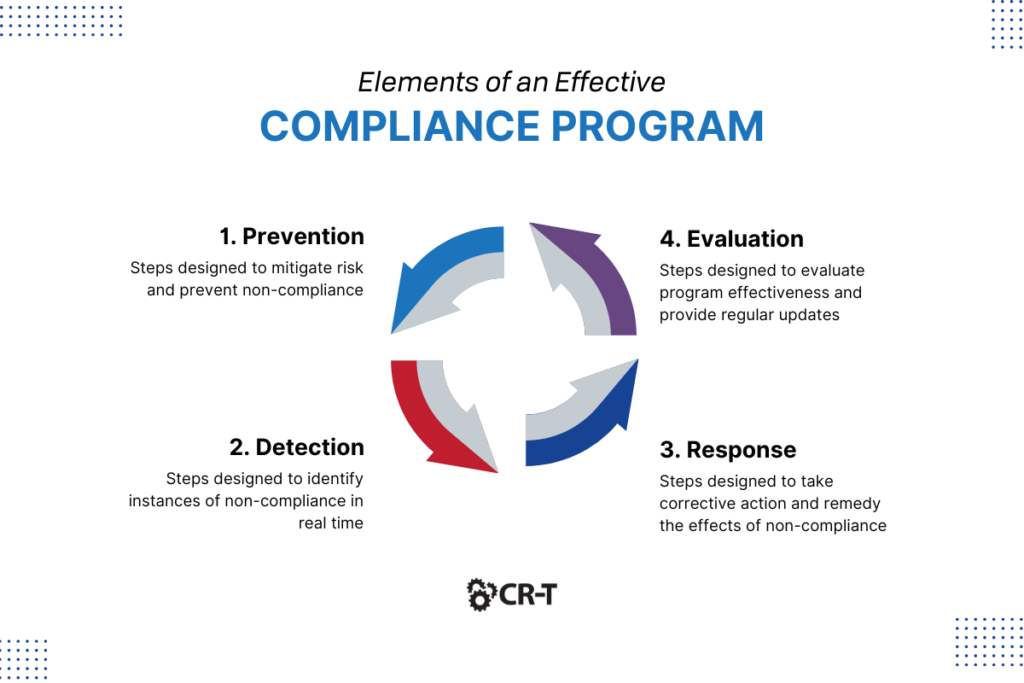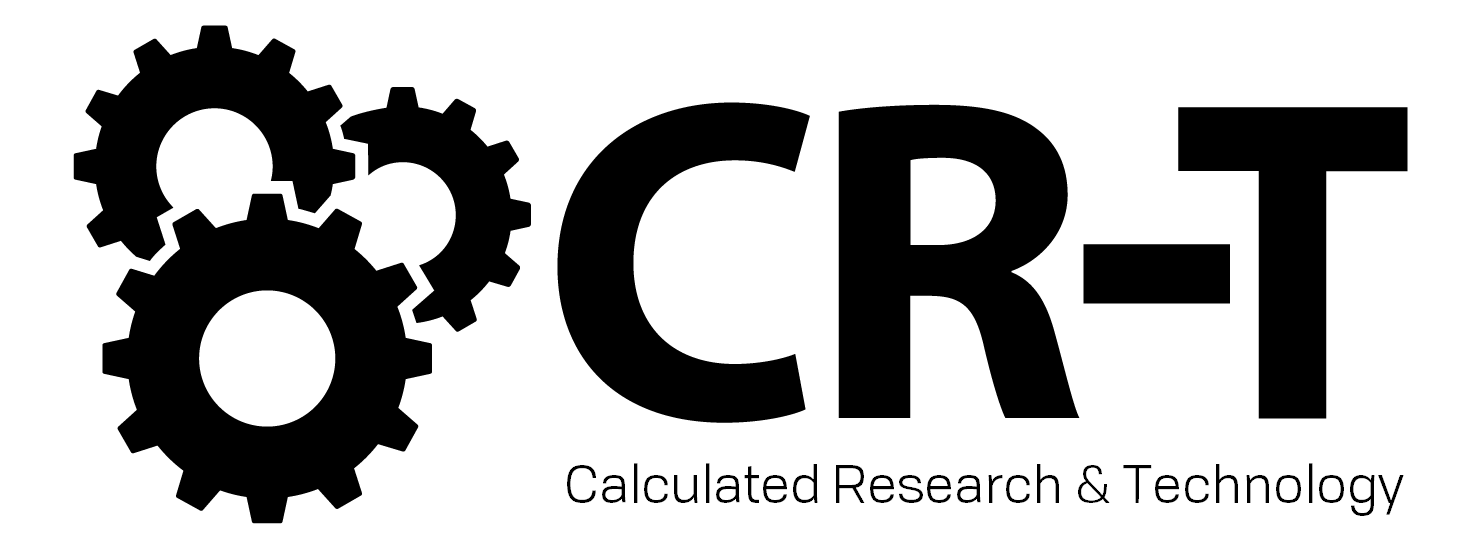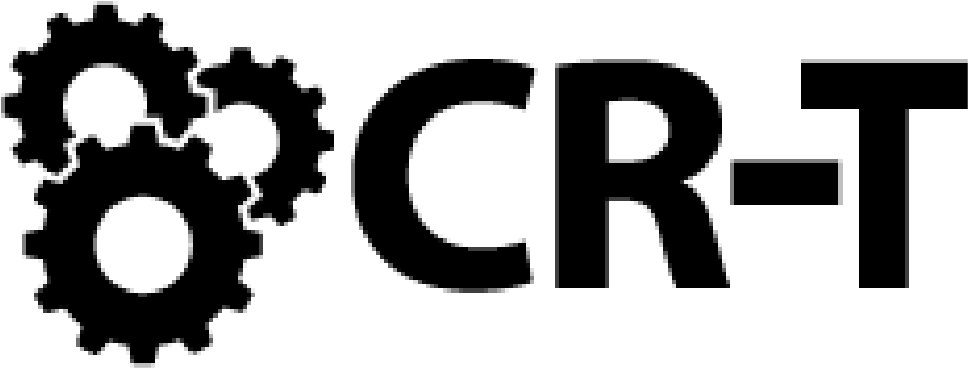You’re familiar with the ever-changing world of regulatory compliance.
Robust compliance enables you to avoid legal liabilities while improving your organization’s effectiveness. And many of you already have strong compliance policies in place.
To help you strengthen your organization’s compliance even further, here are 5 steps you can take right now to ensure your organization remains compliant.
- Conduct Regular Risk Assessments.
- Create Policies and Procedures for Your Organization.
- Clearly Communicate Roles and Responsibilities.
- Streamline Your Processes.
- Review Your Policies Regularly.
Step 1. Conduct Regular Risk Assessments.
Compliance is all about managing risk.
To create effective compliance policies and procedures, you first need to know which areas of compliance pose the greatest risks to your organization. Once you’ve identified these areas, you can focus your resources on addressing them.
Performing regular risk assessments will also ensure that you’re complying with federal and state regulations. The Association of Corporate Counsel (ACC) suggests conducting a risk assessment at least once a year.
Click here to download a sample risk assessment template from the ACC.
Bring in an Expert
In addition to regular risk assessments, perform frequent IT audits to ensure every aspect of your organization’s technology, controls, and policies are compliant with government regulations.
Consider bringing in an expert to offer additional insight as to ways that you can strengthen your organization’s compliance.

Step 2. Create Policies and Procedures for Your Organization.
After conducting a risk assessment and internal audit, identify any gaps in your organization’s regulatory compliance.
Keep in mind that compliance isn’t just about technology—it also involves people and processes.
Research Relevant Laws and Regulations
Begin with the laws and regulations that govern IT compliance.
Here are a few of the most common ones:
- The Sarbanes-Oxley Act regulates auditing and financial reporting.
- The Gramm-Leach Bliley Act regulates the sharing of non-public personal information and financial data.
- The Health Insurance Portability and Accountability Act (HIPAA) regulates the disclosure of patient health information.
Establish Written Policies and Procedures
Once you’ve determined which regulations and issues to address, it’s time to establish the policies and procedures for your organization.
Make sure policies are clearly written. Include procedures that outline the expectations and standards that every member of the organization will be expected to follow.
Make policies and procedures easily accessible to employees and set deadlines for each policy and procedure to be acknowledged.
Involve Compliance Specialists
Managing compliance on your own can feel overwhelming.
Consider hiring a specialist to ensure that everything is in order and that your policies and procedures are compliant.
Step 3. Clearly Communicate Roles and Responsibilities.
Security is everyone’s job.
When everyone understands and prioritizes security, it’s much easier for employees to do their jobs safely.
One of the most important steps in promoting compliance is clearly communicating roles and responsibilities to every member of your organization.
Here are a few questions to help you get started:
- Who is responsible for maintaining and testing compliance?
- How frequently should compliance policies be reviewed and updated?
- How will employees be held accountable to compliance policies and procedures?
Properly Train All Employees
Compliance policies are useless if employees don’t follow them.
After establishing your organization’s policies and procedures, you need to train employees on relevant laws and regulations, in addition to your organization’s policies and code of conduct.
Depending on the size of your organization, you may want to conduct more in-depth training tailored to specific employees who work in high-risk areas.
Ensure that everyone has access to the systems and tools they need to perform their job functions. Make deadlines clear so that every employee knows what’s expected of them and when.
The ACC recommends that you track, document, and follow up on employee training.
Step 4. Streamline Your Processes.
You’re already busy and time-constrained, which makes it difficult to find the time to implement a new compliance program.
Streamlining your processes is an invaluable way to implement and manage your policies and procedures.
Automation not only reduces the time spent on manual processes; it also enables you to spot issues quickly so they can be managed and resolved in real time.
Utilize Compliance Management Software
As part of automating your workflow, utilize compliance management software to manage your policies, training, and accreditations in a single, interconnected system.
Compliance management software enables you to continually monitor your organization’s processes and ensure that they align with applicable laws, regulations, and policies.
Step 5. Review Your Policies Regularly.
Compliance never stands still. It’s a continuous process of responding to changing laws and regulations, identifying the impacts to your organization, and implementing any necessary changes.
Start by scheduling regular reviews of your compliance policies. Ensure you have the data available to respond to any compliance audit notices or regulatory inspections.
Many software solutions include features that automatically detect relevant changes in legislation, which can help you streamline the process for ensuring your policies stay up to date.
Conclusion
Compliance might seem complicated, but it doesn’t have to be overwhelming.
Following the steps above will get you on the right track to establishing and promoting compliance within your organization.
You can start today by conducting a risk assessment and performing a thorough audit of your organization.
As you prioritize compliance, you’ll enjoy greater security and peace of mind than ever before.
Blog & Media
Cloud Services
Managed IT Support
Cyber Security
Project Services
Servers/Infrastructure
Firewalls
Networking
Hardware/Software
Microsoft Products/Cloud
Amazon Web Services
Penetration Testing vs Vulnerability Scanning
If you’re responsible for managing the security of your organization’s network or systems, you may have heard the terms “penetration testing” and “vulnerability testing” thrown
Backup and Disaster Recovery
Your organization can’t afford to neglect backup and disaster recovery. If it takes your business too long to get back online after a disaster, you
6 Steps to Secure Customer Data
Securing customer data is essential for one major reason: your business depends on it. As an IT director, you recognize the importance of cybersecurity when
5 Steps to Promote Compliance in the Workplace
You’re familiar with the ever-changing world of regulatory compliance. Robust compliance enables you to avoid legal liabilities while improving your organization’s effectiveness. And many of

